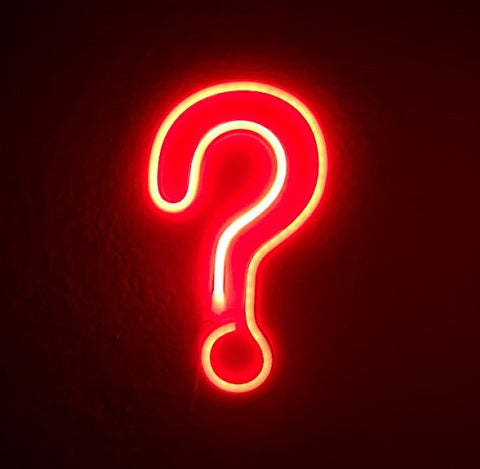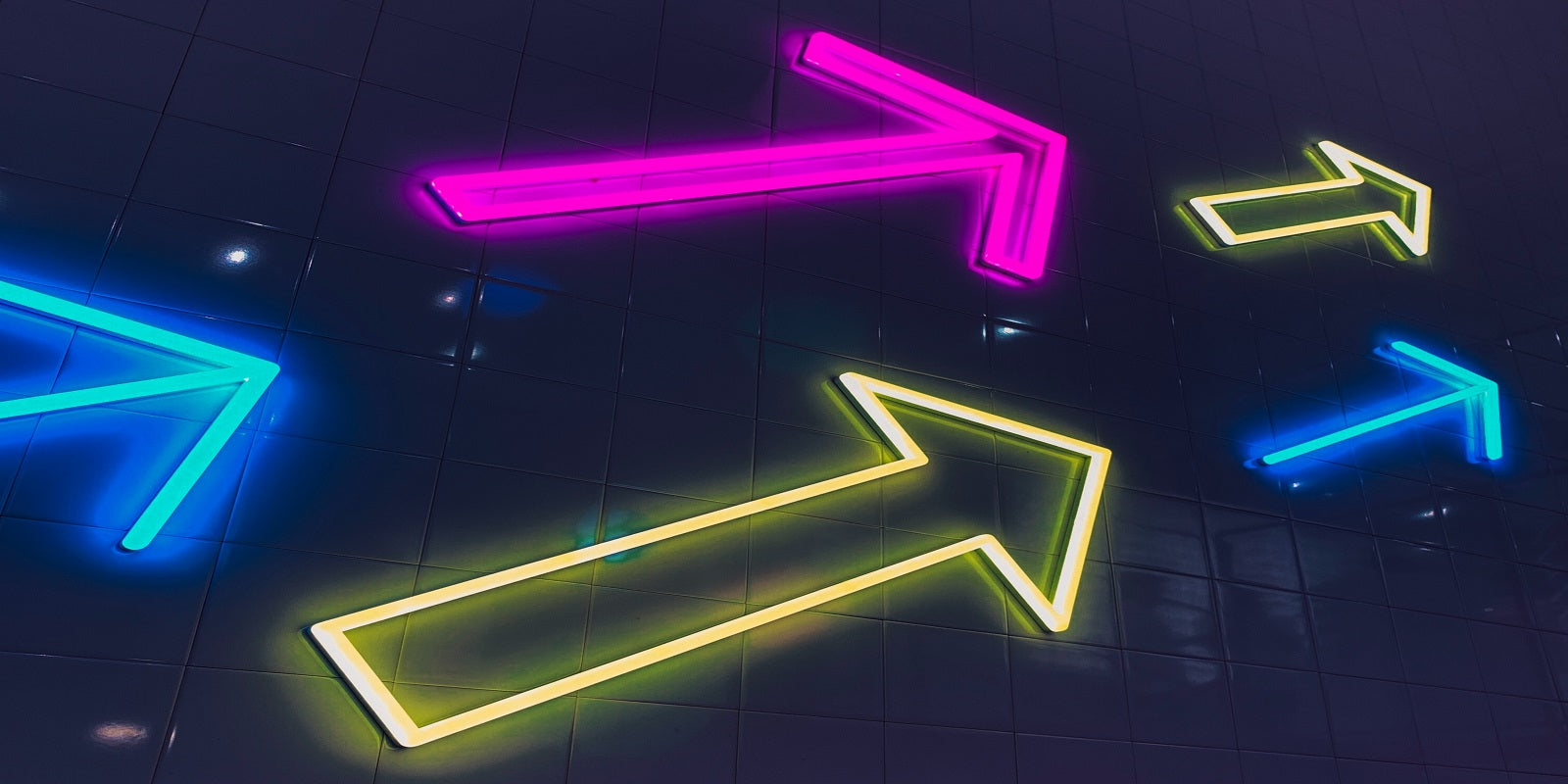You can see various colorful neon signs everywhere when you go shopping and walk along a street, they are there for showing you shop names and brand names, you may think that you are very familiar with them, but do you really know them? Below are 10 things you need to know about neon signs.
1. What are neon signs called?
A neon sign is a cold cathode fluorescent lamp (CCFL). A typical neon sign?comprises?glass tubes containing neon gas and a small amount of argon gas. This is the definition of traditional neon signs,?and?now people use modern LED neon signs. All products on NeonWill are LED signs. LED neon lights are created using a mixture of acrylic, plastic, and LED lights. LED lights are made up of lots of tiny individual bulbs. Just like with traditional neon signs, a lot of craft is?involved in the design, production, and assembly of LED neon lights.

2. Do LED neon signs use a lot of electricity?
LED neon signs are highly efficient for energy consumption.
We will explore how much electricity LED neon lights use and compare their energy consumption to that of traditional glass neon signs.
Energy Consumption of LED Neon Signs
One of the key benefits of LED neon lights is their energy efficiency. LED lights use less energy than traditional incandescent or fluorescent lights, and LED neon signs use even less energy than glass neon signs. According to estimates by several LED neon sign manufacturers, a typical LED neon sign uses between 10 and 25 watts of electricity per meter. This means that a 1-meter LED neon sign would use between 10 and 25 watts, while a 2-meter sign would use between 20 and 50 watts.
To put this in perspective, a 60-watt incandescent light bulb uses 60 watts of electricity per hour, while a 13-watt compact fluorescent light bulb uses 13 watts of electricity per hour. This means that even a 2-meter LED neon sign would use less electricity than a single 60-watt light bulb.
It is also worth noting that LED neon lights are dimmable, meaning that they can be adjusted to use even less electricity. Some LED neon sign manufacturers offer dimmer switches or remote controls that allow users to adjust the brightness of their signs to their liking.
Comparing LED Neon Signs to Glass Neon Signs
Glass neon signs are known for their bright and vibrant colors, but they are also notorious for their energy consumption. Glass neon signs typically use between 3 and 4 watts of electricity per linear foot, which is significantly more than LED neon lights. This means that a 10-foot glass neon sign would use between 30 and 40 watts of electricity, compared to just 10 to 25 watts for an LED neon sign of the same size.
In addition to using more electricity, glass neon signs are also more fragile and prone to breaking than LED neon signs. They require specialized maintenance and repair, which can be expensive and time-consuming. LED neon lights, on the other hand, are made from flexible, shatterproof materials and are virtually maintenance-free.
3. How long do LED neon signs last?
LED neon signs are known for their energy efficiency, durability, and longevity. Unlike traditional glass neon signs, which are prone to breaking and require regular maintenance, LED neon lights are made from flexible, shatterproof materials and are virtually maintenance-free.
Lifespan of LED Neon Signs
The lifespan of an LED neon sign can vary depending on several factors, such as the quality of the materials used, the environment in which it is placed, and the amount of use it receives. In general, a high-quality LED neon sign can last anywhere from 50,000 to 100,000 hours, or even longer. This translates to roughly 5 to 10 years of continuous use, assuming that the sign is turned on 24/7.
To put this in perspective, a traditional glass neon sign typically lasts for around 15,000 hours, or just over a year of continuous use. This means that an LED neon sign can last up to 7 times longer than a glass neon sign, making it a much more cost-effective and long-lasting option for businesses and individuals.
Factors that Impact LED Neon Sign Lifespan
While LED neon lights are designed to last for many years, several factors can impact their lifespan. These include:
Quality of Materials:?The quality of the materials used to make the sign can have a significant impact on its lifespan. High-quality materials are more durable and resistant to damage than lower-quality materials, which can lead to a longer lifespan.
Environmental Factors: The environment in which the sign is placed can also impact its lifespan. Signs that are exposed to extreme temperatures, moisture, or UV radiation may not last as long as those that are placed in a more controlled environment.
Usage: The amount of use the sign receives can also impact its lifespan. Signs that are turned on 24/7 will not last as long as those that are used only occasionally.
Maintenance:?Proper maintenance can help to extend the lifespan of an LED neon sign. Regular cleaning and inspection can help to identify and repair any issues before they cause significant damage.
4. Can you leave LED neon signs on overnight?
The answer is yes. Although it may seem counter-intuitive, leaving your neon sign on 24/7 will make it last longer. The electricity cost will be minimal.
5. Are LED neon signs safe indoors?
Modern neon signs are no longer as much of an electrical shock risk as they may have once been. Today, neon lighting serves as a safe alternative to many other lighting sources. You may need to see what happened to Lady Sophie.
Sophie had always been captivated by the vibrant neon signs that adorned the streets of her city, the colorful lights reflecting off the pavement and beckoning her to come closer. As she grew older and began to appreciate the aesthetics of interior design, she dreamed of one day owning a neon sign of her own to add some personality and flair to her living space.
However, Sophie was hesitant to take the plunge and purchase a traditional glass neon sign. She had heard horror stories of the high voltage required to operate them, the fragile glass tubes that could shatter and cause injury, and the risk of fire and electrical malfunctions. The thought of bringing such a dangerous and unpredictable object into her home made her uneasy.
But then, Sophie discovered LED neon lights. She was fascinated by the idea of a neon sign that was not only safer but also more eco-friendly and energy-efficient. She began to do some research and found that LED neon lights were becoming increasingly popular in both residential and commercial settings, offering a safe and sustainable alternative to traditional neon.
However, as she delved deeper into her research, Sophie realized that the world of LED neon signs was not as straightforward as she had initially thought. There were a multitude of factors to consider, from the type of materials used to the color and brightness of the sign.
She began to wonder: what kind of LED neon sign would be the best fit for her living space? Would a bright and bold sign overpower her other decor, or would a more subtle and understated design fail to make an impact? And what about the environmental impact of LED neon lights- were they as eco-friendly as they claimed to be?
As Sophie continued to explore the world of LED neon lights, she found herself drawn into a complex web of information, opinions, and conflicting viewpoints. She spoke with experts in the industry-NeonWill, read reviews and customer testimonials, and even consulted with an interior designer to determine the best course of action.
In the end, Sophie decided on a beautiful and unique LED neon sign that added a touch of personality and style to her living space. She was pleased to learn that the sign was not only safe and energy-efficient but also made from sustainable and eco-friendly materials. And as she gazed at the neon lights reflecting off her walls, she couldn't help but feel a sense of satisfaction and pride in her decision.
Sophie's journey through the world of LED neon lights was a complicated one, full of twists and turns and unexpected challenges. But in the end, her persistence and determination paid off, and she was rewarded with a beautiful and unique piece of decor that she could be proud of.
6. Are the LED neon signs we sell friendly to the environment?
Yes, the LED neon lights that are available in the market today are generally considered to be more eco-friendly than traditional glass neon signs. This is because they are energy-efficient, produce less heat, and contain fewer hazardous materials.
Energy Efficiency
LED neon signs are much more energy-efficient than traditional glass neon signs. According to a report by the US Department of Energy, LED lighting is up to 80% more efficient than traditional lighting. This means that LED neon lights use significantly less energy than glass neon signs, resulting in a lower carbon footprint and reduced greenhouse gas emissions.
Less Heat Production
Another benefit of LED neon signs is that they produce less heat than glass neon signs. Traditional glass neon signs use high-voltage electricity to heat up the gases inside the glass tubes, which can generate a lot of heat. This can cause the signs to become very hot to the touch and can be a fire hazard. LED neon lights, on the other hand, use low-voltage electricity and produce very little heat, making them safer and more eco-friendly.
Fewer Hazardous Materials
Glass neon signs contain a variety of hazardous materials, including mercury, lead, and phosphor. These materials can be toxic to humans and the environment and can pose a significant risk if they are not disposed of properly. LED neon signs, on the other hand, do not contain these hazardous materials and are generally considered to be safer and more eco-friendly.
7. How hot do neon signs get?
As all of our signs use LED Neon, they have a very low voltage – 12 volts to be exact. As a result, they produce minimal to no heat, even when they've been on for days or weeks on end. The most they heat up is a slight warmth to touch after being on for extended periods of time.
8. Are the LED signs we sell cheaper than traditional neon signs?
Cheaper Price?– Our LED neon lights are cheaper to design and purchase than traditional neon signs.
9. Are the LED neon signs we sell safe for shipping and easy to install?
Yes. They are less fragile than the traditional glass versions so there are fewer problems with breakages during transport. Because LED signs are lighter and thinner than traditional neon they are also very easy to install. It's as simple as hanging a picture and plugging in a lamp. We also send you instruments that can help you to install them.
10. Is it easy to place a custom LED neon sign order on NeonWill?
Yes. You just need to enter the text you want, choose size, font, color, power adapter, location, as well as backboard style and color, then you can finish the payment and wait for products at your home.
Now, are you feeling yourseflf becoming a expert for neon sign?



Share:
What if the Iconic Movie Scenes Become a Neon Sign?
Purple Neon Sign: for which Occasion is it the Best Choice?